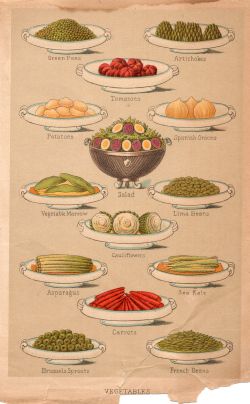Mrs. Beeton’s steak & kidney pie.
Elizabeth David reviled Isabella Beeton as a plagiarist who could not cook, someone who stole her recipes, most unjustly, to David, from the great Eliza Acton and flogged bastardized abominations of the French food that David purported to adore, at least earlier in life. As was so often the case, David was unfair.
Later editions of the book--poor Mrs. Beeton died young, just after she completed it in 1861--did include abominations, but they were inserted in longer and longer editions by the publisher who purchased the rights to the work and cannily rode Victorian and Edwardian food fads, mostly faux French, to great profit by keeping the book ‘fresh’ and therefore in perpetual print.
Mrs. Beeton herself had cheerfully disclosed the facts both that she was no cook and that her recipes, which originally appeared in the issues of her husband’s periodical, had been submitted by its readers at her request. Her steak & kidney pudding recipe, which forms the basis for the filling of this pie, “was contributed to this work by a Sussex lady, in which county the inhabitants are noted for their savoury puddings.” (Beeton 282)
The recipe is extremely plain, but not unpleasant for that. It showcases the essence of good ingredients. You will want a nine inch piepan or something similar. Six servings.
For Mrs. Beeton’s ‘Common Paste:’
 1 ¼ lb flour
1 ¼ lb flour- ½ lb unsalted butter
- ½ teaspoon salt
- “rather more than ½ pint [ cold ] water” (try 10 ounces)
- butter for greasing the piepan
- a beaten egg yolk
For her filling:
- about 2 lb rump steak or chuck cut into 1 inch cubes
- 2 lamb kidneys, cored and cut into eighths
- salt and pepper
- Make the pastry by dumping the flour, butter and salt in a food processor, then pulsing it just until the mixture resembles cornmeal. Do not overwork it.
- Drizzle the water into the processor and pulse the dough until it forms a smooth paste. Form it into a ball, cover it in plastic wrap and lodge it in the refrigerator for at least half an hour before rolling out pastry sheets for bottom and topcrusts.
- Lightly grease the piepan with butter, lay the bottomcrust into the pan so that it hangs over the edge, then distribute the steak and kidney evenly over the pastry. Season the meat with generous doses of salt and pepper, then “[p]our in sufficient water to half fill the dish.”
- Top the steak and kidney mixture with the topcrust and crimp it to the bottomcrust by pressing your thumb at right angles to the edge of the pan.
- Trim off any detritus from the pastry overhang, cut a hole in the center of the topcrust to vent the pie and decorate it with scraps. Brush the pastry with the egg and bake until it turns deep gold, usually in an hour to an hour and a half (Mrs. Beeton sticks with the latter).
Notes:
- That, believe it or not, is the base pie, and there is nothing at all wrong with it. The basic recipe stood the proverbial test of time: The extremely popular and, not incidentally, also frugal, Elizabeth Craig including one that is very nearly identical in the wildly popular Cooking with Elizabeth Craig , which first appeared in 1932 and enjoyed innumerable editions for during a period of some forty years.
-Do, however, consider taking up Mrs. Beeton on some optional additions, and take the advice of the Editor to replace the water with beef stock. Splashes of hot sauce and Worcestershire will not do any harm.
-Here is Mrs. Beeton: Add, “when liked, a few grains of cayenne; ”some add a little flour to thicken the gravy, but it is not necessary; these “pies may be flavoured in various ways, with oysters and their liquor, mushrooms, minced onions [along wit a dusting of flour, Craig’s only addition to the base recipe], &c.” Stone soup indeed.
-A final tip: “Fill the dish sufficiently with meat to support the crust, and to give it a nice raised appearance when baked, and not to look flat and hollow.”
-Oddly enough Mrs. Beeton includes a recipe for beefsteak but not steak and kidney pie, and the steak and kidney but not a pudding of beef alone, which we know from other sources had been prevalent at least since the eighteenth century. Mrs. Beeton relied on the common sense of her readers to infer that the fillings are interchangeable.
- Mrs. Beeton, or more likely her source, does not identify the kind of kidney to be sliced into eight pieces. Craig specifies “Sheep’s Kidneys,” but anything larger than lamb would be too big. Pig’s or calf’s kidney will work at least as well; you will want a single pig’s or half a calf’s kidney cored and cut into half inch chunks.
-‘Stodge’ often appears immediately following ‘Victorian’ to describe the food of Mrs. Beeton’s time but that too can be unfair. Typical proportions of flour to suet for pastry in cookbooks of the twentieth and twenty-first century run 2:1 but Mrs. Beeton calls for less fat, 6 ounces of suet per pound of flour.
-After all that, what, really, could be so bad about poor Mrs. Beeton?

